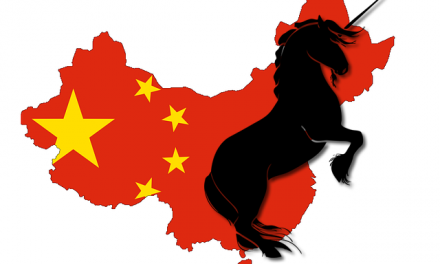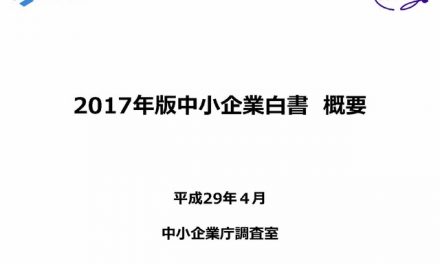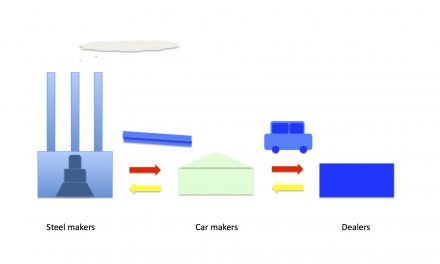
The startup condition in Japan 3
The new white paper classified 5-to-10-year-old Japanese startup companies into 3 types, high growth, stable growth and sustained growth.
The overall trend is that service sectors account for the largest proportion among these 3 types, but each type has a different characteristic.
The paper also shows that management issues that entrepreneurs face also change, depending on the growth stage from seed, early growth to stable expansion.
Seed
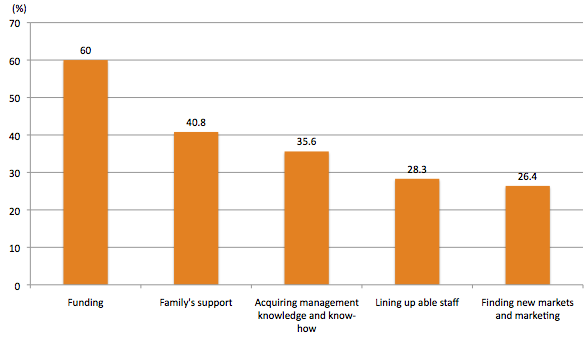
(n: 2,781)
The most severe management issue in this stage is funding (60%). This is followed by family’s support (40.8%), acquiring management knowledge and know-how (35.6%), lining up able staff (28.3%) and finally finding new markets and marketing (26.4%).
Early Growth
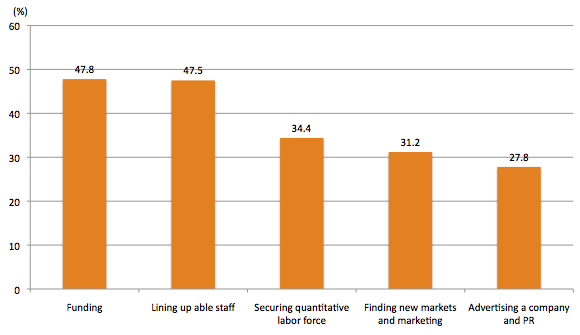
(n: 2,762)
Still funding is regarded as the most serious matter by entrepreneurs (47.8%). However, the figure of lining up able staff jumped up to 47.5% from 28.3%, which is almost same as funding.
Stable Expansion
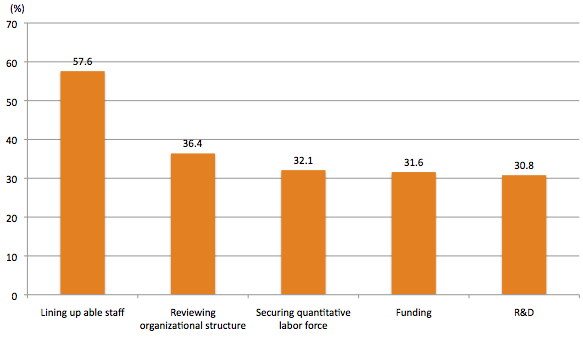
(n: 2,690)
In this stage, issues related to securing human resources became the most significant for startups, including lining up able staff, reviewing organizational structure and securing quantitative labor force. On the other hand, funding became less important.
These show that as startup companies grow, the serious matters change from financial issues to human resources issues.
Utilization of Unsecured Loan
The paper also mentions the relevance of startups’ successes to their ways of funding by comparing successful startups with unsuccessful ones.
Stable growth companies

Fast-growing companies
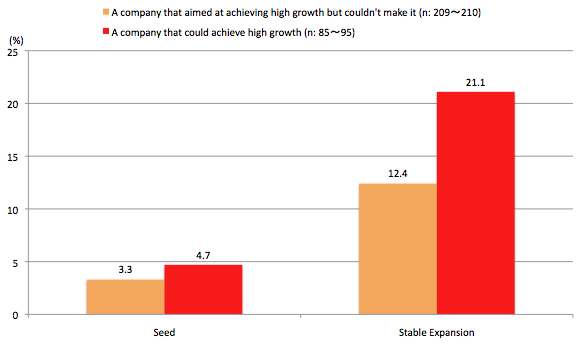
From seed to stable expansion period, the utilization of unsecured loan helps startup enterprises achieve both stable and high growth. However, in Japan, still secured loans are common, which makes taking risks difficult.
To be continued …
*Source: MUFJ Research & Consulting
Sponsored Link





